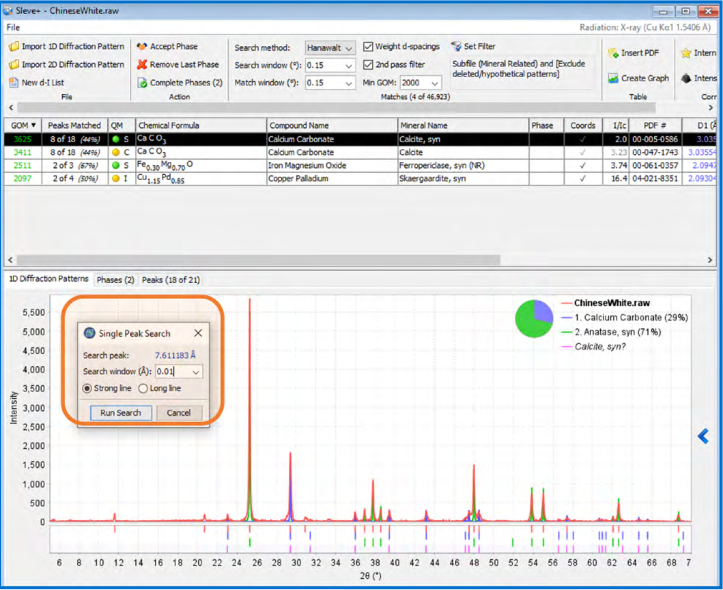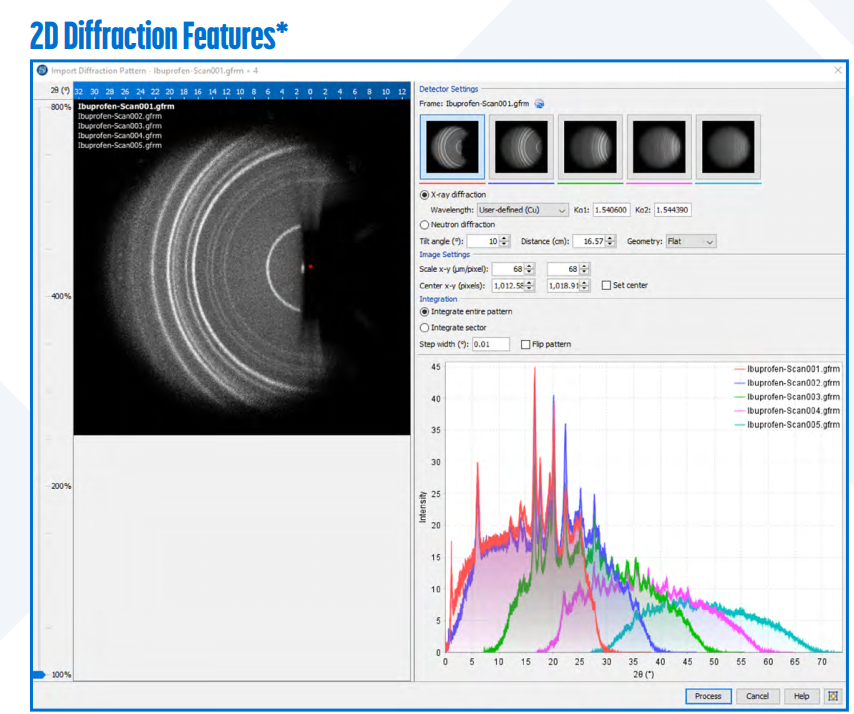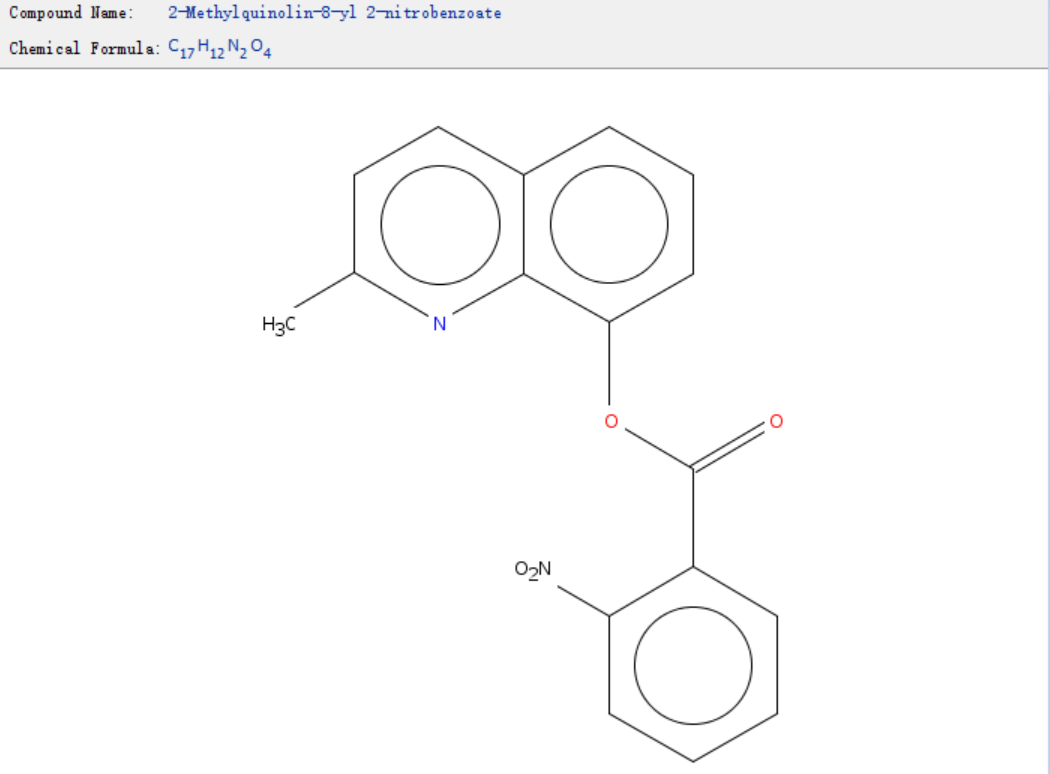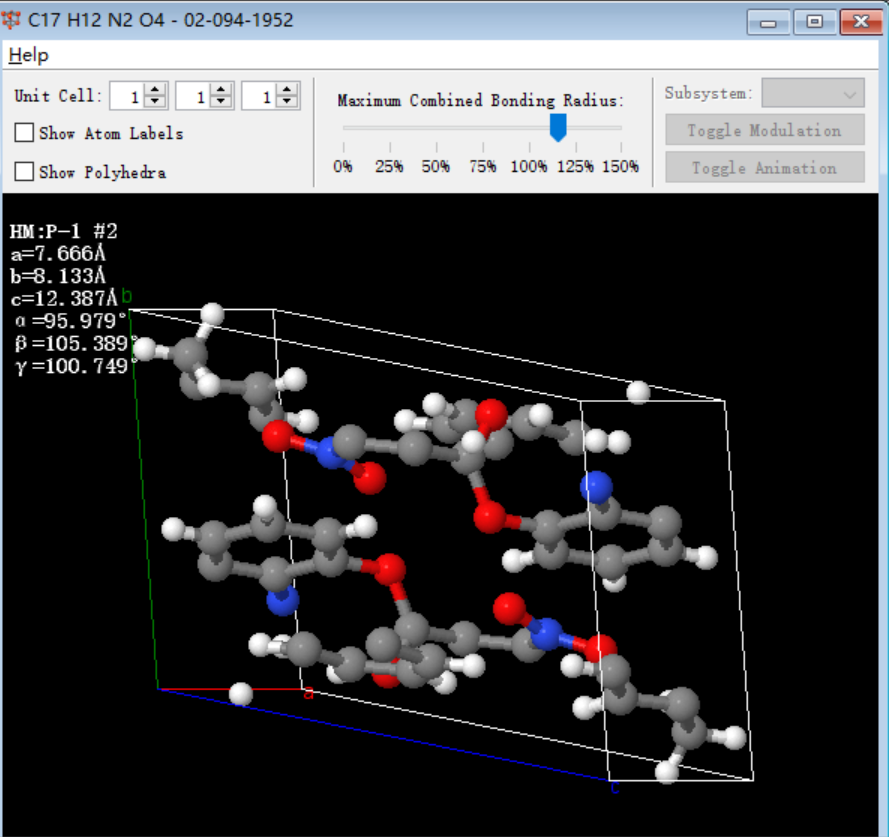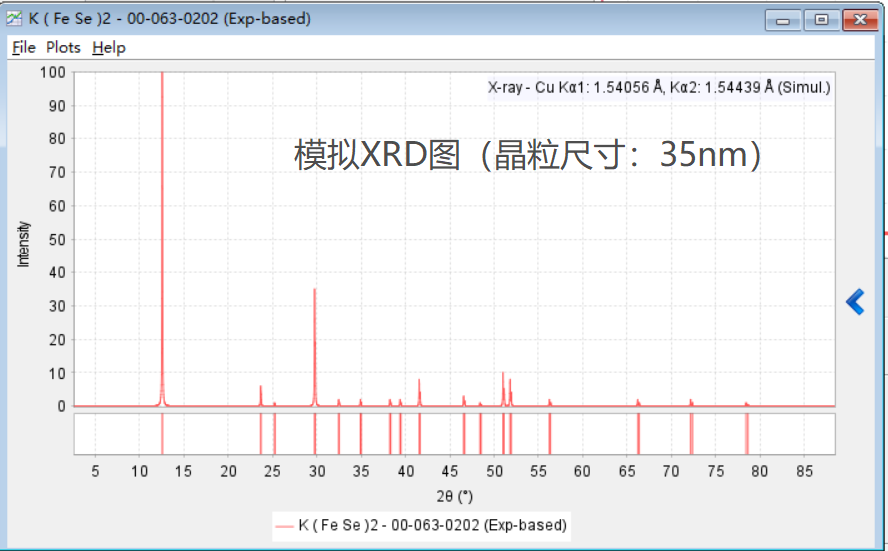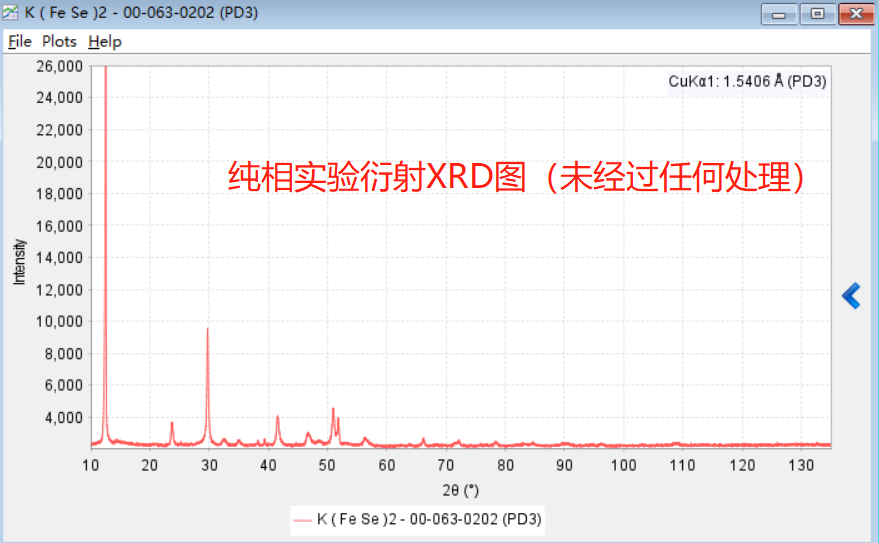In September 2023, the International Diffraction Data Center (ICDD) officially releasedPDF-5The Standard Diffraction Database is a world standard diffraction database that integrates all data from the previous PDF-4 database and the PDF-4 Organic database. It contains over 1.06 million standard diffraction data for phases, including over 440000 cards for inorganic substances and over 620000 cards for organic substances, meeting the requirements for phase identification and quantitative analysis of all XRD data.PDF-5All data included in the database have been reviewed and given quality labels. Over 950000 cards contain reference intensity RIR (I/Ic) values, which can be used for quantitative analysis using the K-value method.PDF-5The database combined with JADE Pro or JADE Standard software can achieve phase identification and quantitative analysis of crystalline and semi crystalline materials, and can also be compatible with mainstream XRD equipment software. At the same time, it not only contains phase standard diffraction data, but also includes structural data of single crystals. By combining JADE Pro/JADE Standard software, or third-party software, three quantitative analysis methods can be achieved: RIR method, Rietveld refinement method, and Whole Pattern Fitting method.
PDF-5The database is specifically designed for the accurate identification of phase and quantitative analysis of powder XRD data. In addition to the standard diffraction data and single crystal structure data included in ICDD, it also includes data from world-renowned single crystal structure databases. The databases included include:
ICDD Powders (00) -International Centre for DiffractionData(International Diffraction Data Center)
ICSD (01) -Fachinformationszentrum Karlsruhe (FIZ)(International Crystal Structure Database)
NIST (03) -National Institute of Standards and Technology,(National Institute of Standards and Technology database in the United States)
MPDS (04) -MaterialPhases Data System, Linus Pauling File(LPF, Linus Pauling file)
ICDD Single Crystal Data (05) -InternationalCentre for Diffusion Data(International Diffraction Data Center - Single Crystal)
PDF-5The database can meet the analysis needs of almost all material fields, including inorganic materials such as cement, metals and alloys, batteries, minerals, and solid-state devices, organic materials including drugs, dyes, pigments, and polymers, as well as other materials,PDF-5All are included in the database.PDF-5For a single PDF card, the database not only includes standard X-ray diffraction data, but also synchrotron radiation standard diffraction data, electron standard diffraction data, and neutron standard diffraction data, meeting the analysis needs of almost all powder XRD data!
PDF-5The compatible XRD analysis software for databases include JADE Pro, JADE Standard, and analysis software that comes with mainstream diffractometers. If you don't have an XRD device, you don't have to worry about analyzing data.
PDF-5 gift phase analysis module SIeve
SIeve supports the analysis of one-dimensional and two-dimensional XRD data for phase retrieval analysis, as well as quantitative analysis using the K-value method. It is worth mentioning that SIeve can analyze neutron diffraction data.
Overview of PDF-5 2024 inclusion:Inorganic Organic Integrated Database
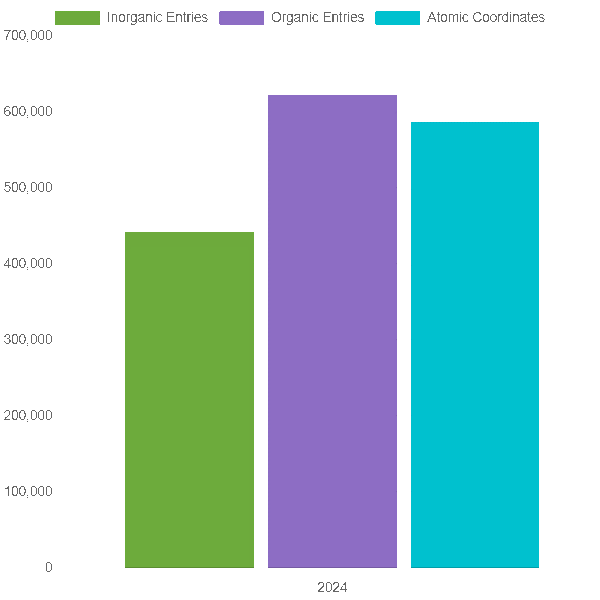
⊙ 1061800 sets of characteristic diffraction data entries;
⊙ 586700 PDF card contains atomic coordinates;
⊙ 442600 sets of inorganic material data
⊙ 623000 sets of organic matter data
⊙ 956600 sets of data contain reference intensity I/Ic values for rapid quantitative analysis of RIR;
⊙ Diversified comprehensive crystallographic database;
⊙ The gift phase retrieval program SIeve can import one-dimensional and two-dimensional powder XRD data for phase retrieval and quantitative analysis;
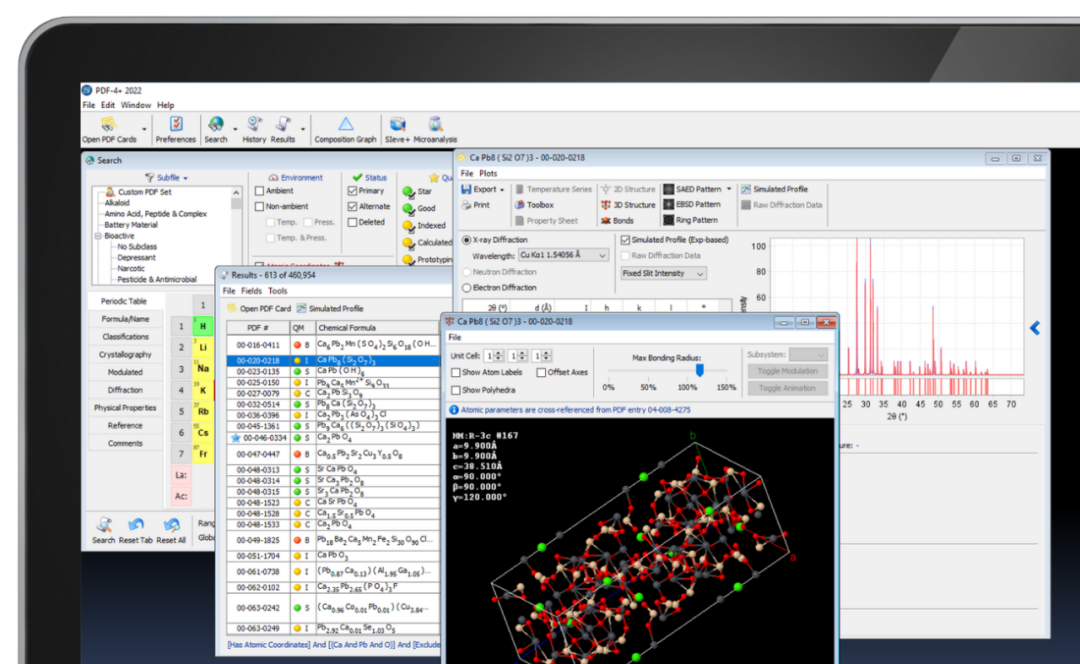
application area
The PDF-5 2024 version database includes standard diffraction cards of phases covering over 50 scientific research fields, such asBattery materials, thermoelectric materials, superconducting materials, metal materials, ceramic materials, mineral materials, metal alloys, drugs, polymersWait. The PDF database isMaterials science, physics, chemistry, geology, pharmacology, biology, inspection and quarantine, judicial appraisalEssential databases for scientific research and industrial production.
Search method
The PDF-5 2024 database supports over 80 types of phase search methods, such as research fields, data sources, data quality, periodic tables, spatial groups, crystallographic parameters, compound names, diffraction data, physical properties of materials, and references, providing convenience for users to quickly and accurately search and identify phases.
1. Research field, data source, data quality, periodic table of elements
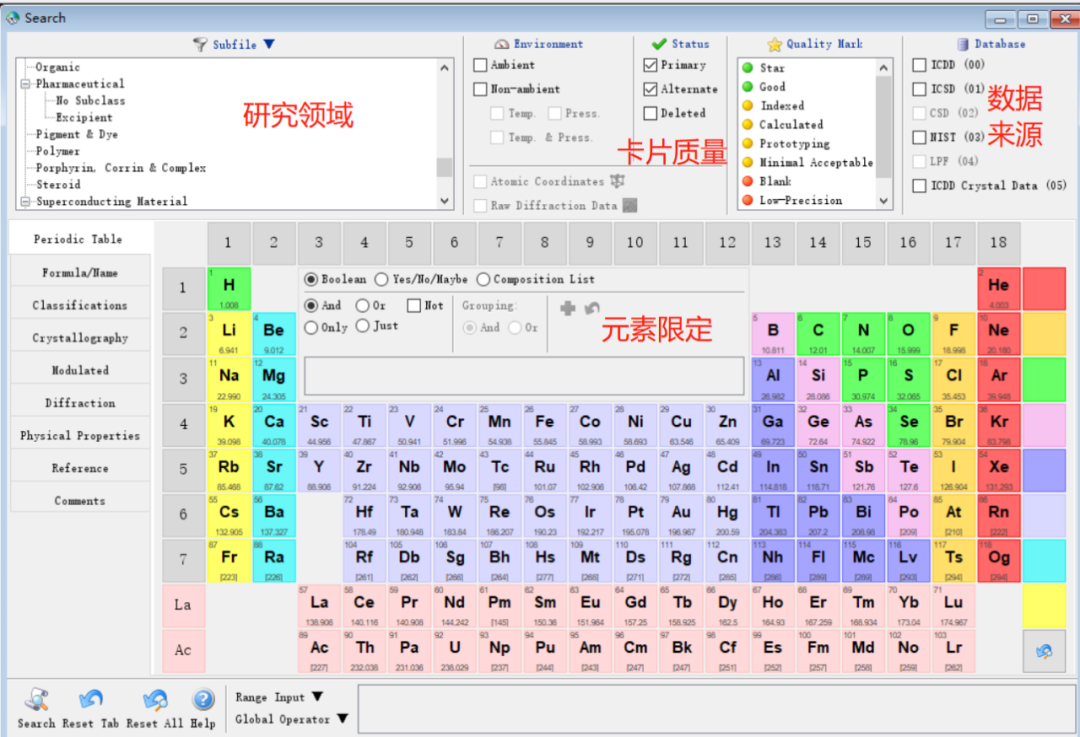
2. Chemical formula related search
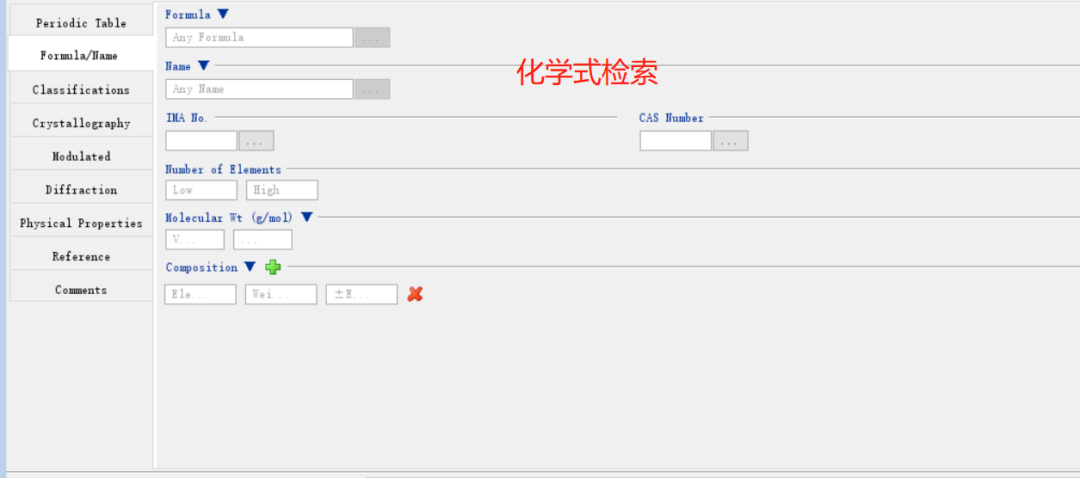
3. Search by category and functional group
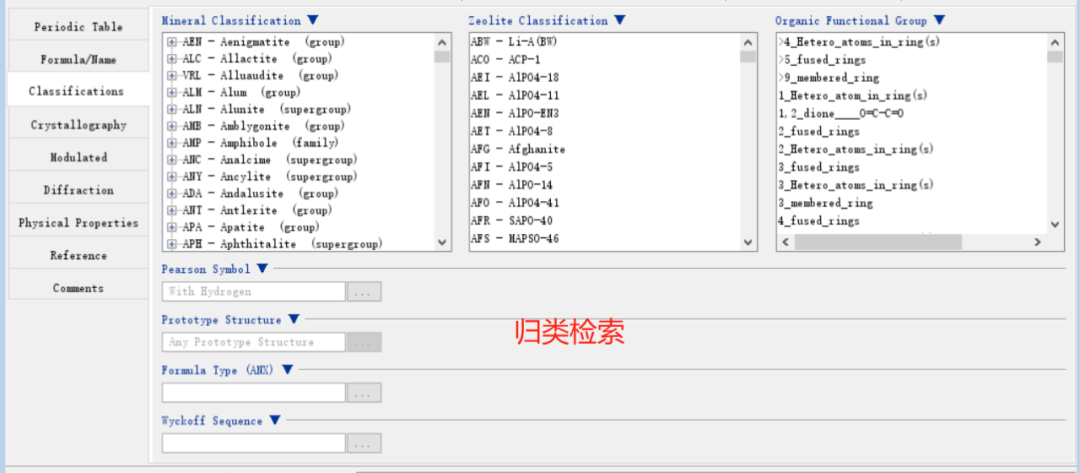
4. crystallographic parameters and spatial group retrieval
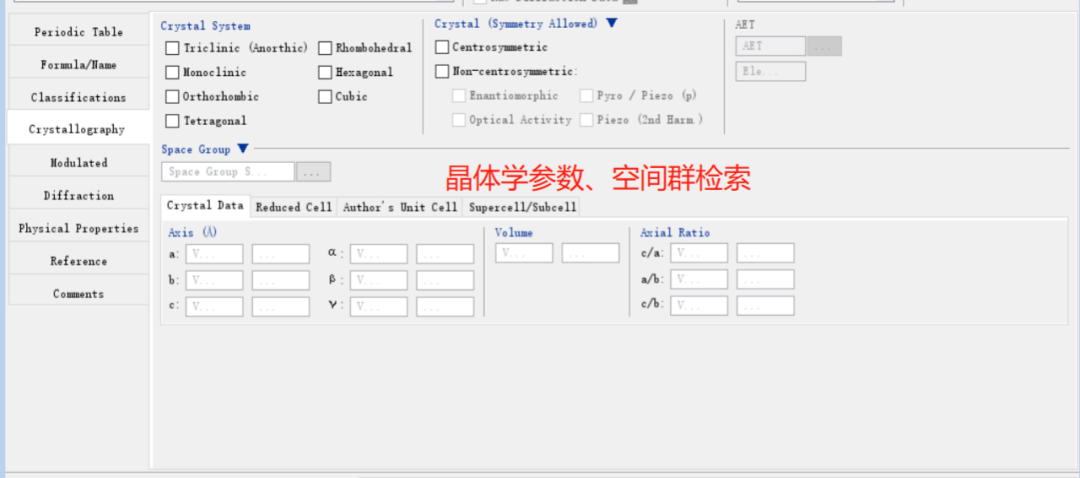
5. Diffraction data retrieval

6. Reference search
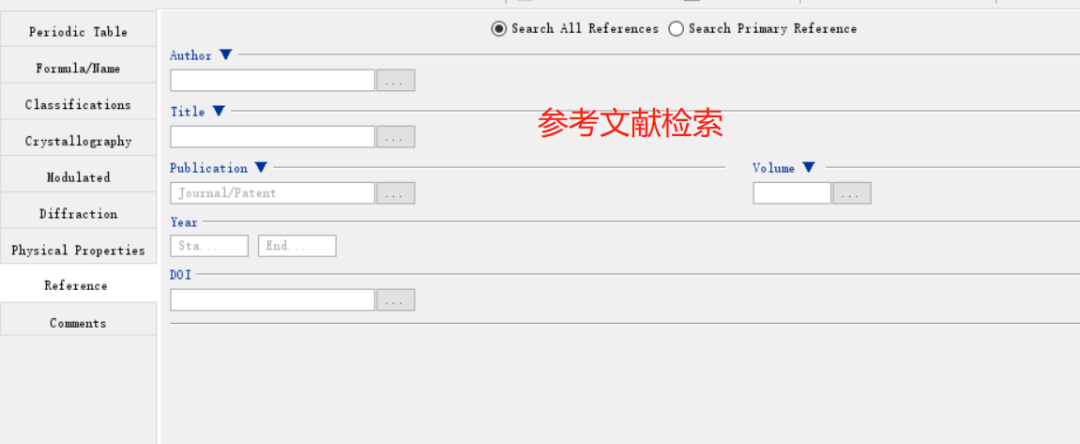
7. PDF card number retrieval
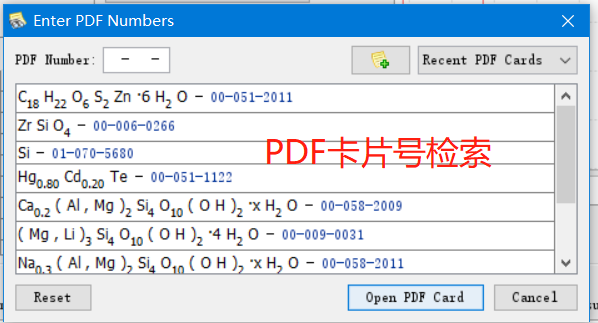
PDF-5 standard diffraction cardConventional phase information
The PDF-5 standard diffraction card can provide over 130 types of information per card, allowing users to quickly and conveniently grasp the overall material overview.
1. PDF card number
Each PDF card has its own number, and each PDF card number corresponds to an object. The PDF card number consists of three sets of data and nine digits, XX-XX-XXXX. For example, the PDF card number for iron-based superconductor KFe2Se2 is 00-063-0202, where 00 represents the data source. The card is from the powder diffraction database of ICDD, 063 represents the 63rd volume included, and 0202 represents the corresponding number of the PDF card.
2. Diffraction wavelength
In PDF-5, users can choose X-ray diffraction targets such as Cu, Fe, Mo, Co, Cr, Mn, Ag, and user-defined wavelengths, as well as neutron diffraction (fixed wavelength and TOF neutron data) and electron diffraction data.
3. Diffraction data, relative intensity of diffraction peaks, d-I - (hkl) list
The peak intensity in the PDF card is normalized to 1000, and all other diffraction intensities are relative diffraction intensities; The spacing between crystal planes corresponding to the three strong lines is in bold font.
In the PDF-4 card, the diffraction intensity is divided into fixed slit intensity, variable slit intensity, and integrated diffraction intensity;
If the suffix of the relative intensity I value has m, it indicates that the relative diffraction intensity of other crystal plane diffraction peaks is equal to the relative diffraction intensity of that crystal plane diffraction peak.
Taking the KFe2Se2 compound with PDF card numbers 00-063-0202 as an example, the PDF card information is as follows:
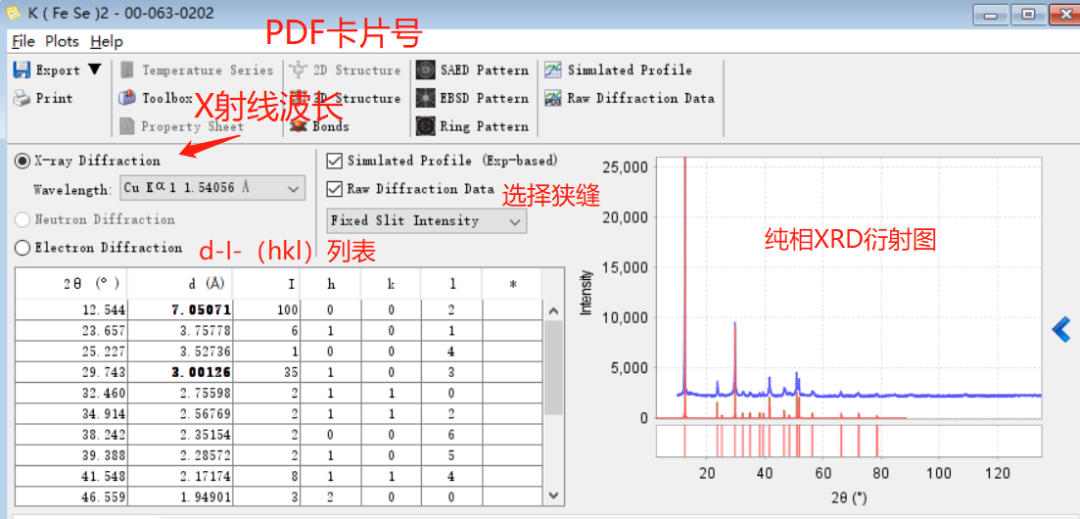
4. Basic information of phases in PDF cards
The basic information of the physical phase in the PDF card mainly includes the following points:
1. Status of PDF Card, divided into three types: Primary, Alternative, and Delete;
Primary- Usually indicates that the data quality included in PDF cards is relatively good, and it is diffraction data at room temperature;
AlternativeOne PDF card among many PDF cards of a certain material does not necessarily indicate poor quality of the included PDF card;
DeletedThe PDF card has an unresolved error and has been deleted from the current PDF database. But the card can still be retrieved, making it convenient for users to refer to the data. In general, PDF cards marked as "deleted" will have better quality PDF cards instead of "deleted" PDF cards.
2. Quality Mark for PDF CardsThe PDF cards published by ICDD are the world's first to label the quality of all collected data, and each PDF card is reviewed, edited, and standardized by different levels of editing. If there should be multiple PDF cards for the same object, it is generally recommended to choose a card with a higher quality marking level for use.Quality MarkFor the specific definition of each quality mark in, please pay attention to other professional articles of the official account.
3. The temperature and pressure at which the card was collected. It is worth noting that in the process of phase identification, it is necessary to choose a temperature and pressure that is consistent with the experiment. Otherwise, the structure of the phase identification may be incorrect.
4. The chemical formula, structural formula, atomic ratio, atomic weight ratio, common English name, mineral name, IMA number, CAS number, inclusion time, etc. of the phase.
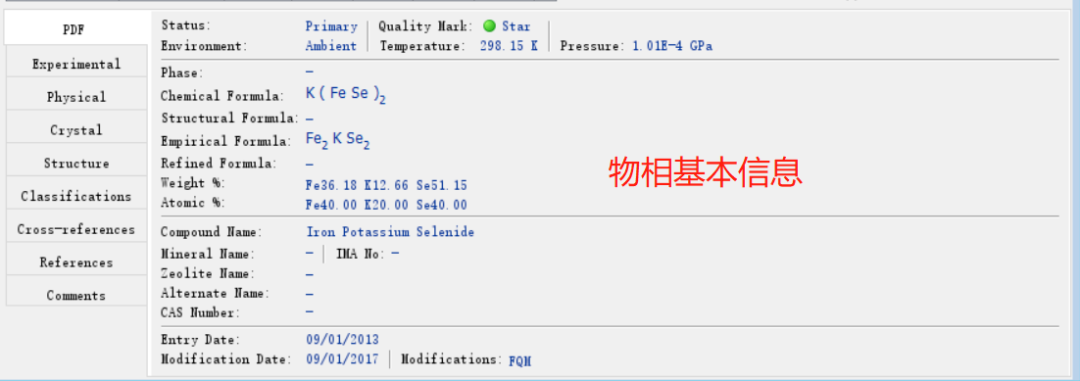
5. Experimental conditions used when collecting PDF cards
This mainly includes information such as X-ray wavelength, filter, camera radius, internal standard, d-value, intensity, etc.
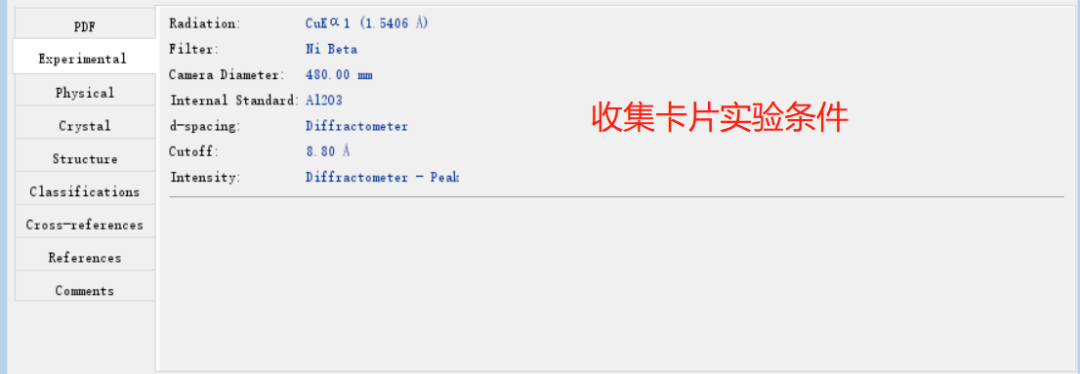
6. Crystallographic data of phases (Physical, Crystal)
This mainly includes information such as crystal system, spatial group, cell parameters, cell volume, number of chemical formula units Z, density, F factor, reference strength RIR value I/Ic, R factor, etc.
In general, if the F factor is greater than 15, it is considered that the XRD pattern of the phase is more reliable.
2. The reference intensity I/Ic is the integral intensity ratio of the peak intensity between the tested compound and the standard corundum when the weight of the tested compound and the standard corundum is 1:1. The wavelength of X-rays affects the I/Ic value, and most PDF cards are collected using a Cu K X-ray source α 1 (1.5406 A). If other wavelength X-ray sources are used in the experiment, special attention should be paid to the wavelength used to collect the PDF card when analyzing the relative content of the phase. At this time, the I/Ic value in the PDF card may no longer have reference value. If the PDF card corresponds to structural data, JADE standard or JADE Pro software can be used to theoretically calculate the specific values of the I/Ic of the phase at different wavelengths.
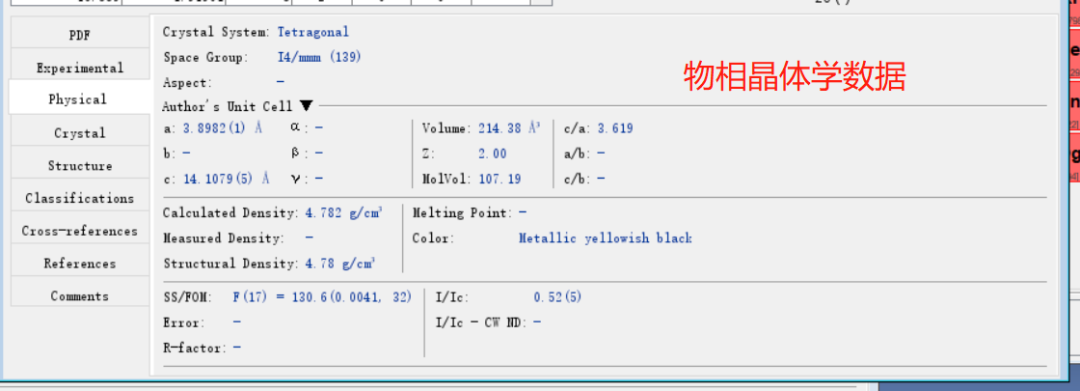
7. Single crystal structure data (Structure)
This mainly includes crystallographic parameters, spatial group symmetry operations, atomic coordinates, occupancy information, temperature factors, and other information.
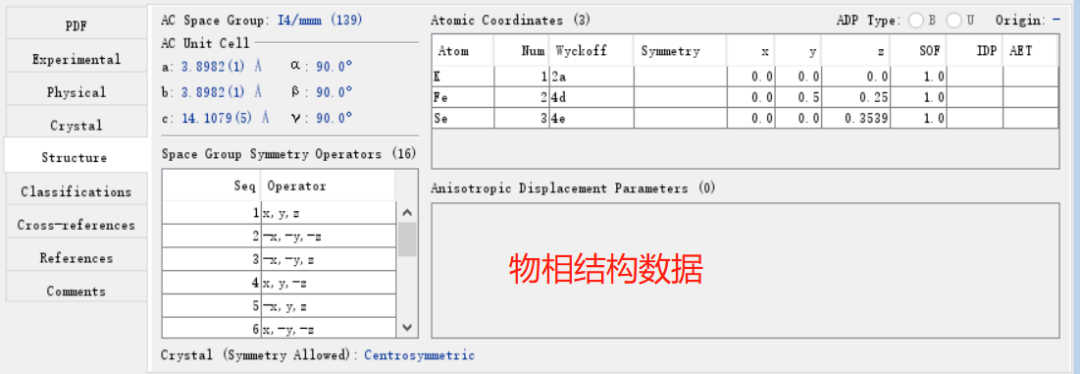
8. Classifications corresponding to objects
This mainly includes information such as sub domains, ore classification, crystal structure prototypes, etc.
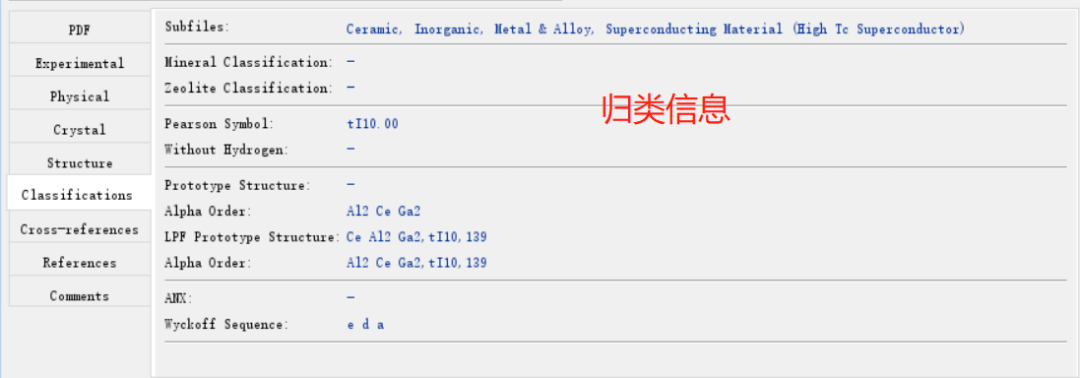
9. Cross Reference Similar PDF Cards
Display a series of basic information about PDF cards that can be cross referenced with the current PDF card, and indicate the status of the cross referenced PDF card (Primary, Alternative, or Delete) or the diffraction pattern of the cross referenced PDF card that has a "correlation" with the current PDF card. "Correlation" refers to the two having the same spatial group and molecular formula, and their stoichiometry may vary slightly.
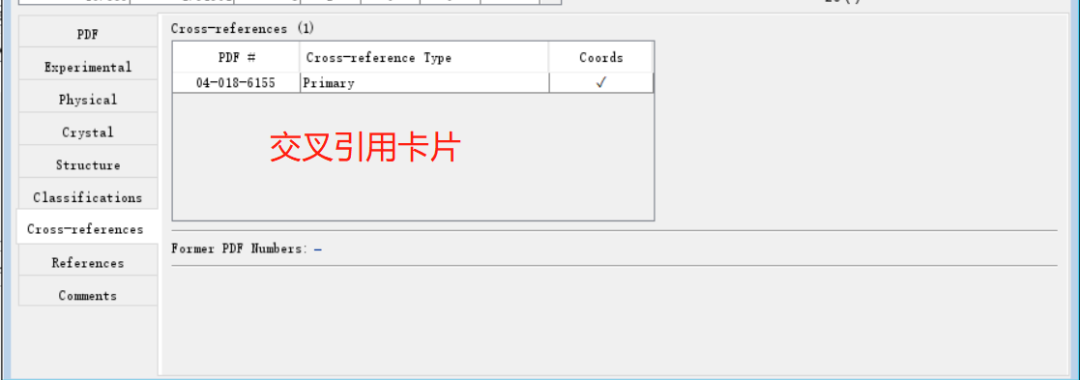
10. References
Mainly displays the literature information referenced by the current PDF card, and the number of references varies for different PDF cards.
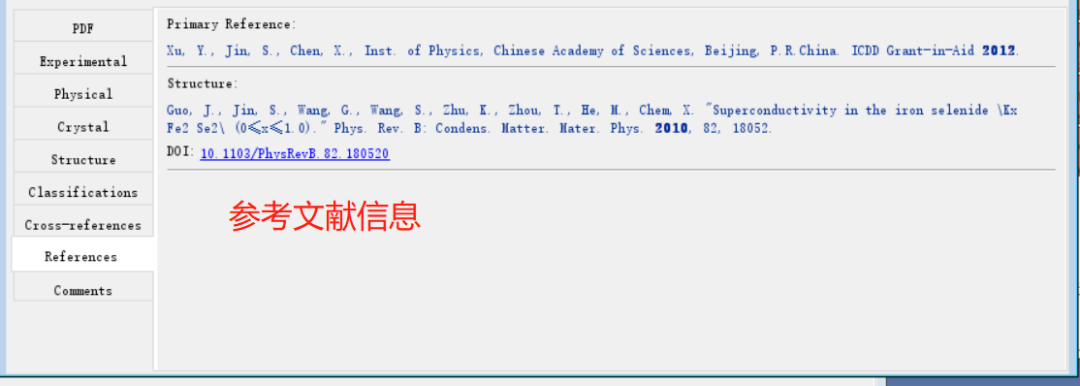
11. Edit Comments
The main display is the comment on the current PDF card, which comes from the contributor or ICDD editor of the card. It generally includes basic information such as sample synthesis method, diffraction inclusion conditions, etc. If the quality of the current PDF card is poor, the editor will also indicate the reason. Many people often overlook this information when using PDF cards. In many cases, the editing comments section of PDF cards contains key information about the object, which can effectively help users make secondary judgments in object retrieval.
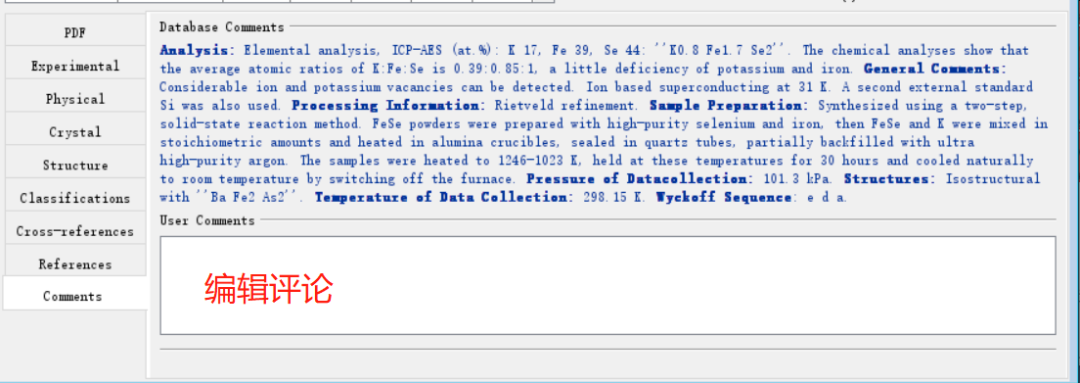
PDF-5/4 series standard diffraction cardCharacteristic physical information
In addition to containing all the content of traditional PDF-2 cards, the PDF-5/4 series cards also have a series of additional special functions, including experimental diffraction spectra of pure materials, electron/neutron diffraction spectra, two-dimensional powder diffraction spectra (2D-XRD), high and low temperature diffraction spectra, in-situ high-pressure diffraction spectra, structural information, bond length and bond angle, selected area electron diffraction (SAED), electron backscatter diffraction spectra (EBSD), and other information.
1. Temperature Series
The PDF-5/4 series database contains in-situ high and low temperature diffraction data of some phases. Through diffraction data at different temperatures, it is convenient to search for the thermal expansion performance, phase transition, and other properties of materials. Taking the PDF card number 00-046-1045 SiO2 as an example, the temperature variation range included in the PDF-4 database ranges from 10 K to 1813 K.

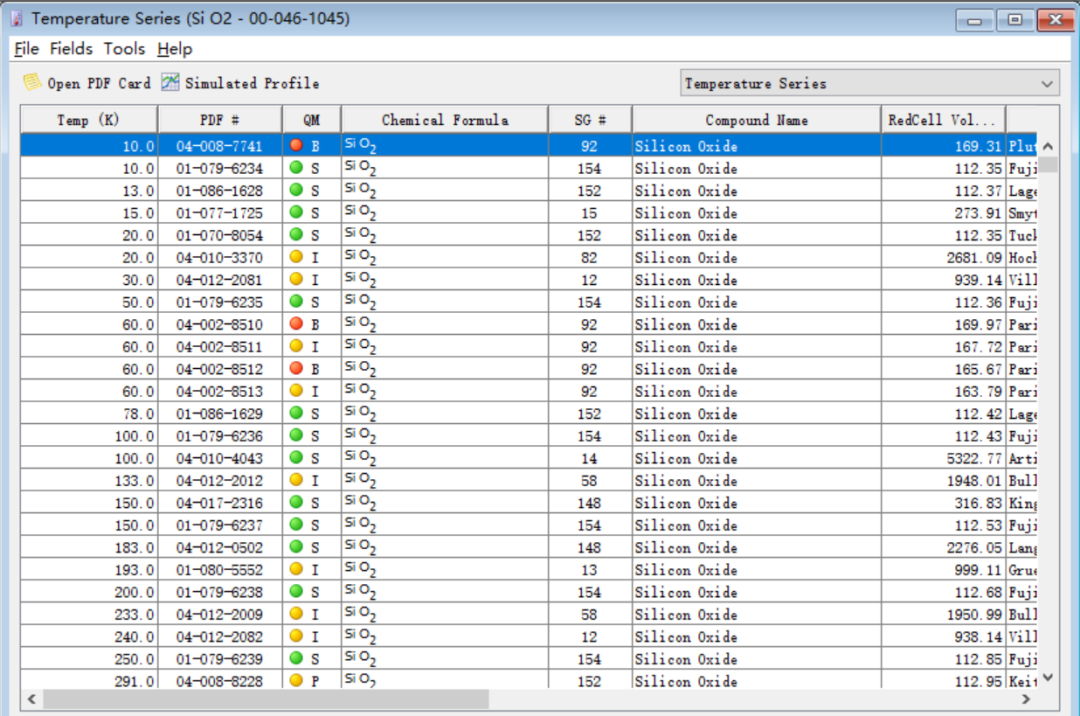
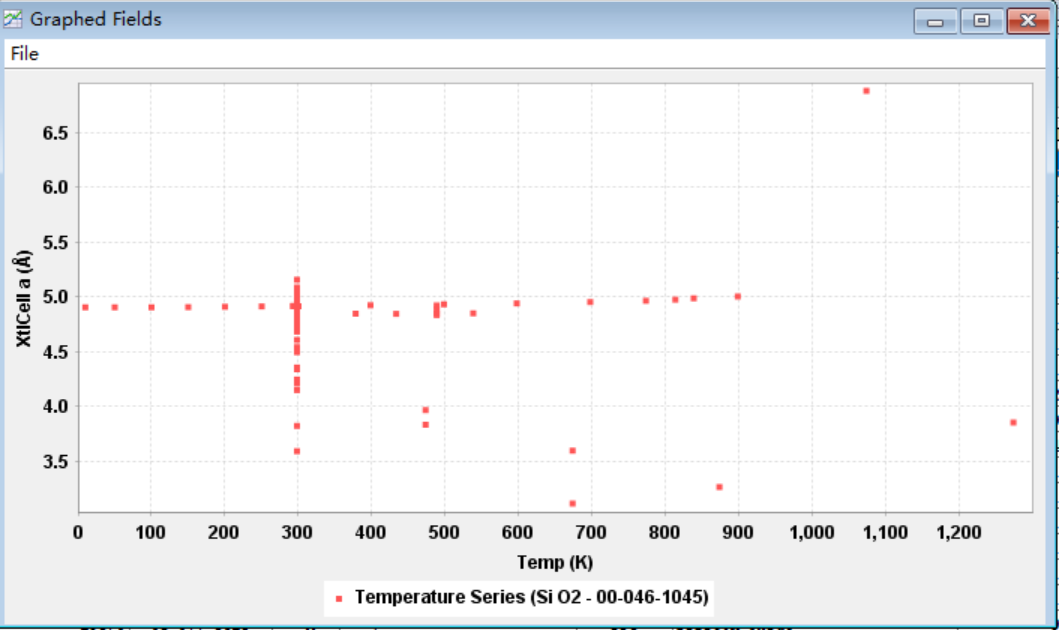
2. Toolbox
In the Toolbox functional area, users can customize the wavelength according to their needs, calculate the peak position, Miller index, crystal plane spacing, crystal plane angle, and other information of the phase.
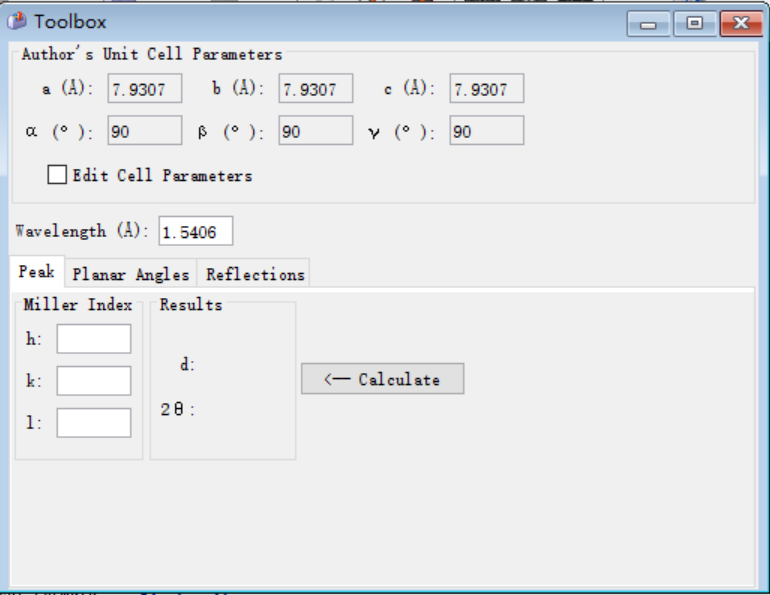
3. Physical and chemical properties document (Property Sheet)
In the PDF-5/4 series database, some PDF cards (such as battery materials, ion conductor materials, hydrogen storage materials, semiconductor materials, etc.) contain physical property files (Property Sheets) that display additional information about the phase in the form of documents, such as conductivity data for battery materials and ion conductor materials. Users can click on the Property Sheet icon to automatically generate a document that displays the basic physical properties of the phase, mainly in text and chart formats, with relevant references attached.
Taking PDF card number 00-004-0545 single crystal Ge as an example, the document on the basic physical properties of the added phase in its Property Sheet is shown in the following figure:
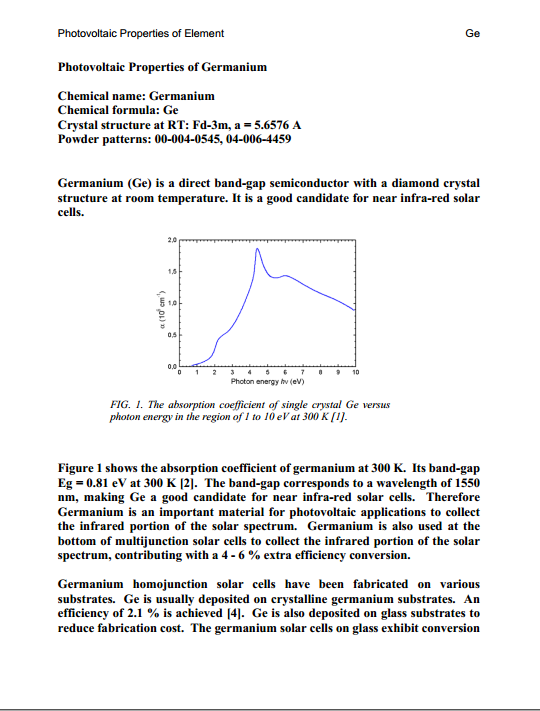
4. 2D or 3D structural schematic diagram
For organic compounds, usually the two-dimensional (2D) structural schematic diagram is displayed on PDF cards; For inorganic substances, the PDF card usually displays a three-dimensional (3D) structural schematic and a dynamic schematic; For some phases, both 2D and 3D structural diagrams are included in the PDF card. Usually, in 2D structural diagrams, C and H atoms are represented in omitted form, but when there is ambiguity between C and H atoms, the PDF card will specifically label them in the 2D structure. Users can click on the 2D/3D icon to display a 2D or 3D structural diagram of the object phase.
Taking C17H12N2O4 with PDF card numbers 02-094-1952 as an example, click on the 2D/3D icon, and its 2D/3D structure schematic diagram is shown below. The 3D structure is a dynamic schematic diagram, and this example only displays the cross-section of one of the static schematic diagrams:
5. Key length and key angle information (Bonds)
In the PDF-5/4 series database, detailed information on bond length, bond angle, atomic coordinates, symmetry, crystal plane spacing, atomic spacing, atomic distribution, etc. is provided, which can be applied to the analysis of electron pair distribution function data (PDF).
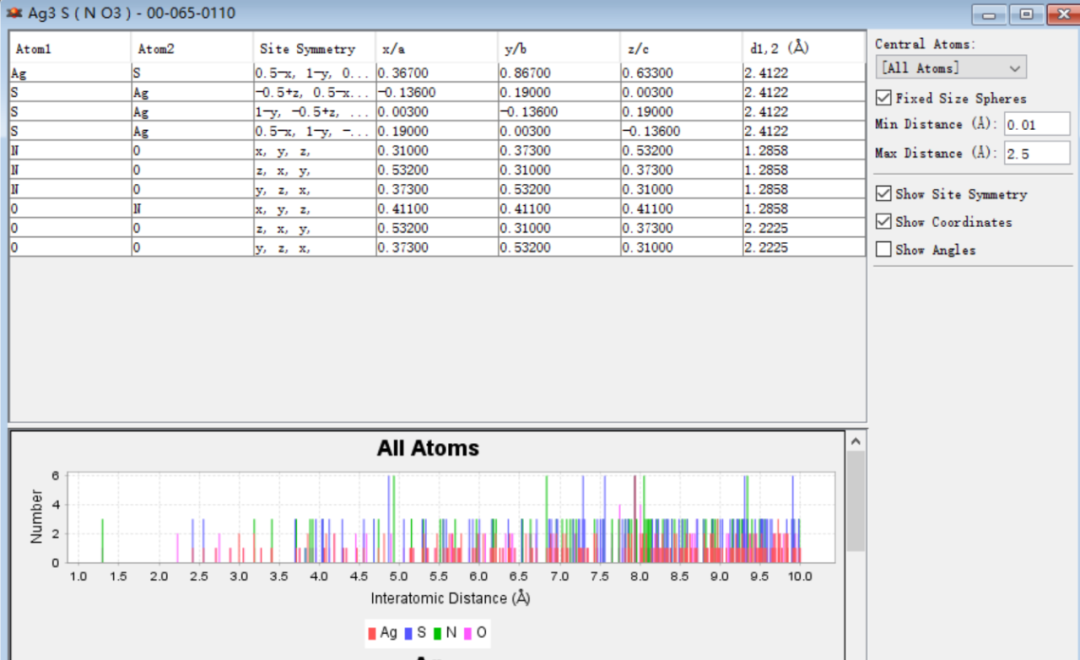
6. Selected Area Electron Diffraction (SAED)
Taking the selected area electron diffraction (SAED) pattern of Ag3S (NO3) with PDF card numbers 00-065-0110 as an example
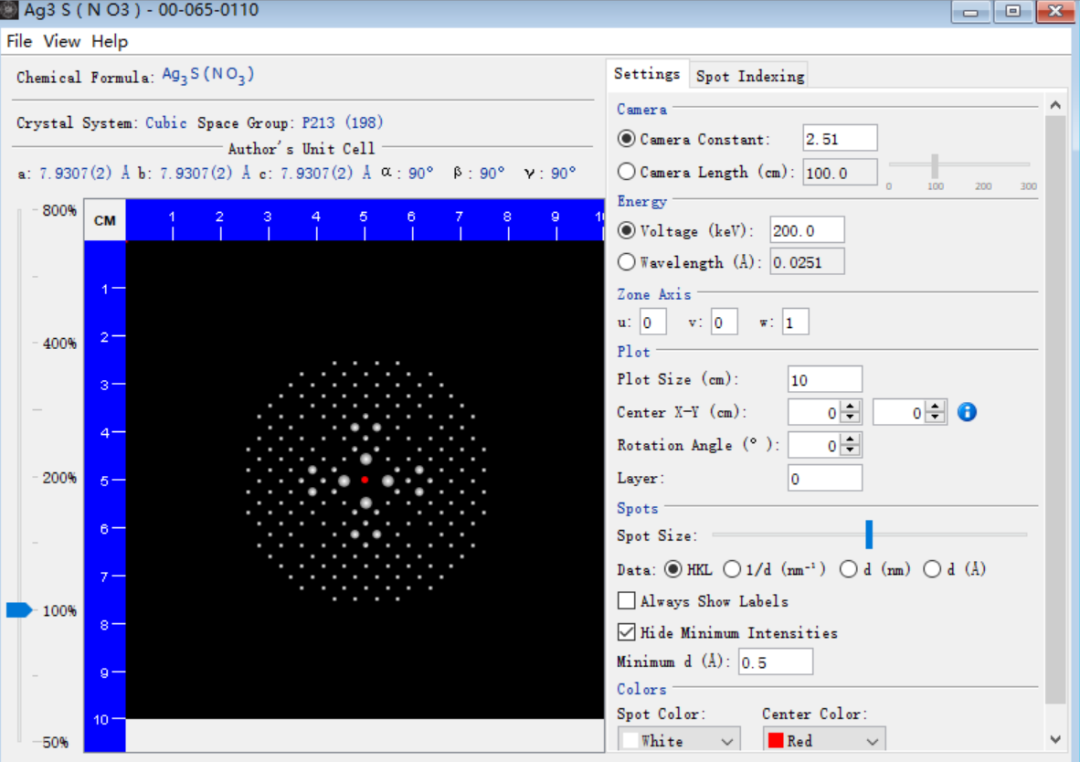
7. Electron backscatter diffraction (EBSD)
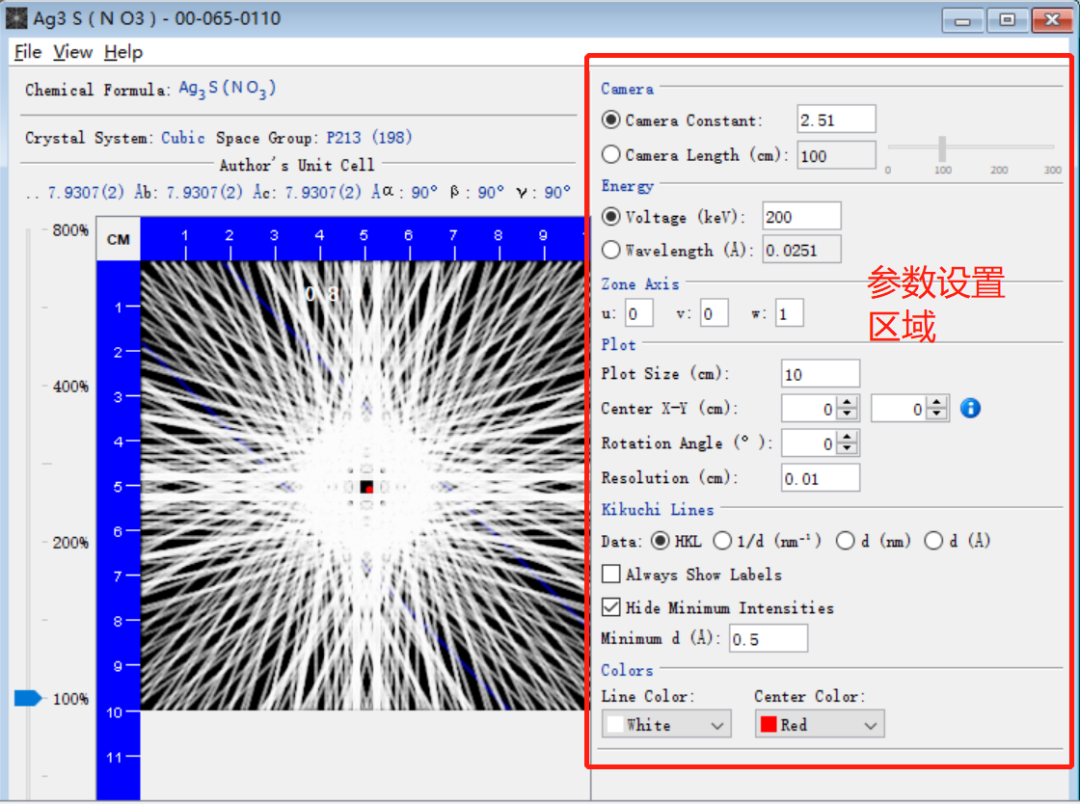
8. Two dimensional Debye ring
The PDF-4 series database provides a two-dimensional (2D) diffraction ring (Ring) spectrum of the phase, which is a simulated image. It is assumed that the detector is located at the center of the incident beam transmission geometry, and the measured phase is a randomly oriented microcrystalline particle.
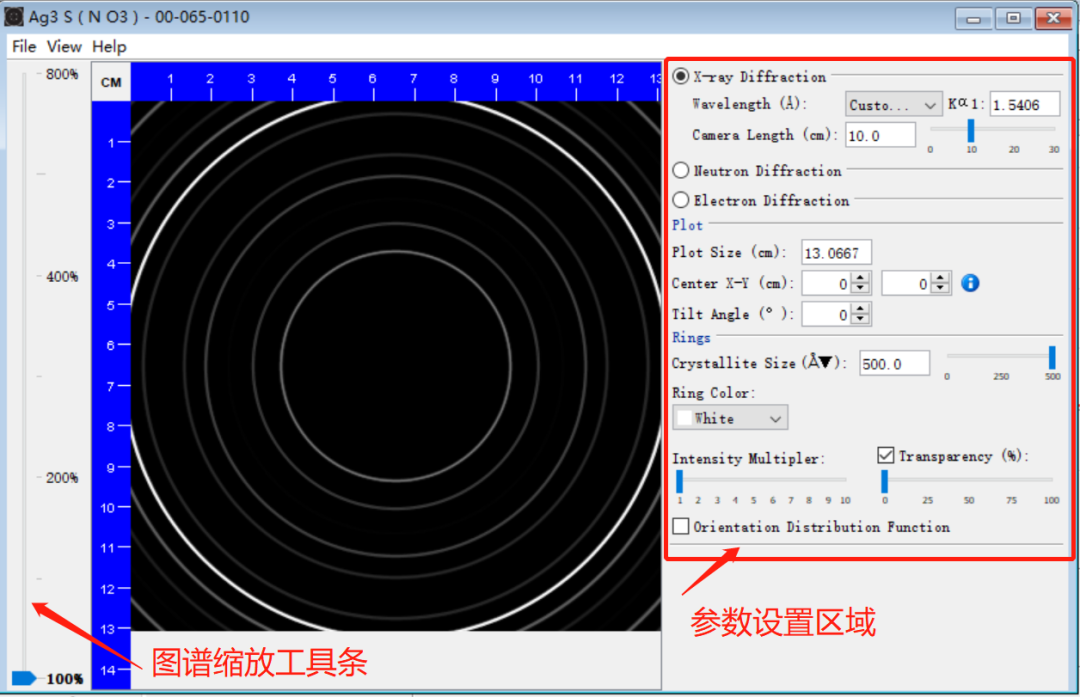
9. Simulated XRD patterns and pure phase XRD experimental patterns
The PDF-4 series database provides simulated diffraction profiles and pure phase experimental diffraction spectra. Taking PDF card number 00-063-0202 iron-based superconductor KFe2Se2 as an example:
PDF-5 2024The database can also be directly imported into other commonly used search software, such as JADE, EVA, Highscore, etc., to achieve true seamless connection and provide indispensable assistance for your scientific research!




